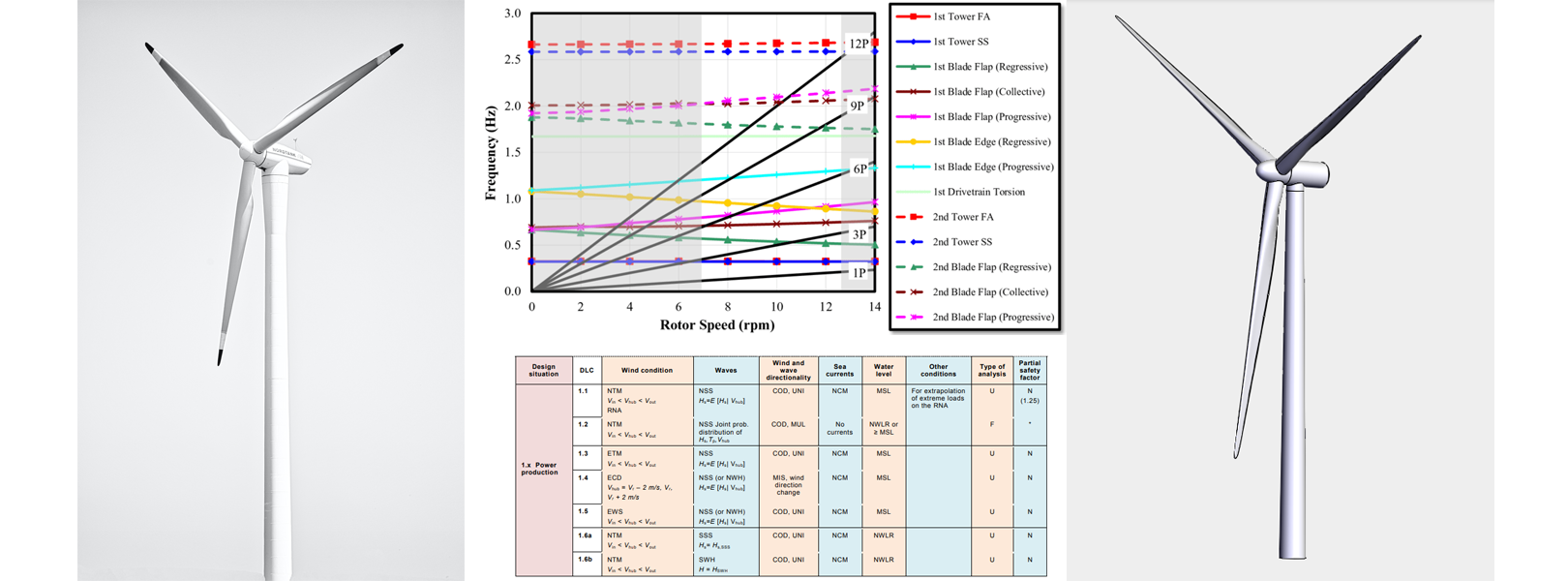BLADE DESIGN
Wind turbine blade design is typically an iterative process that involves multiple engineers working closely together. A typical mix of engineers is a load engineer, a structural engineer, and an aerodynamicist who is to design an aerofoil shape. The iterative loop starts by collecting all the information from the previous design stage and creating a simulation model. The Loads engineer is then responsible for conducting the simulations and checking the feasibility of the design. Loads engineer would typically simulate the full load spectrum unless the problem at hand does not require complete analysis. The resultant fatigue and extreme loads are then collected and checked for exceedance. A good practice is to compare obtained changes against previous design iterations to highlight the effects of introduced modifications. An important aspect of blade design is stability. Frequency domain analysis is typically employed to this end, where mode frequencies are checked using the Campbell diagram for resonance areas. Structural and aerodynamic dampings are also often assessed. Results are then discussed with the structural engineer, who in turn will need to provide changes to the blade structure to accommodate for deviation from design requirements. This can be for instance a modification of stiffness distribution that would affect selected natural frequency.
Example of two wind turbine designs on the sides - unknown design on the left, and DTU 10MW on the right. In the middle an example of Campbell diagram and table with design load cases.
A structural engineer would typically employ CAD/FEA tools, that would represent the blade structure more accurately than the beam elements, which are classically used in conjunction with BEM method. Thus, a structural engineer would need to simplify his model to beam element properties after changes are introduced. This is then passed to Loads engineer, and the next iteration stage can start.
The blade design process may involve many other aspects and technical considerations. For instance, stability to stall-induced and vortex-induced vibrations may be assessed. Finally, documentation needs to be prepared and delivered to a certification body.
WindFlow Engineering experts have excessive knowledge and experience in conducting blade design iterations. Also, we are experienced in conducting Root Cause Analysis studies, where the approach is tuned for the problem at hand. Further, we helped prepare documentation for certification and replied to received questions on several occasions.
[1] Bak Ch., Zahle F., Bitsche R., Kim T., Yde A., Henriksen L.C., Hansen M.H., Blasques J.P., Gaunaa M., Natarajan A., The DTU 10-MW Reference Wind Turbine. https://www.hawc2.dk/Download/HAWC2-Model/DTU-10-MW-Reference-Wind-Turbine
